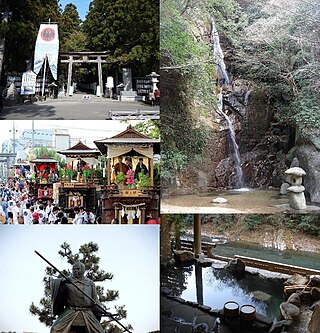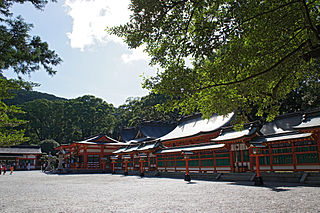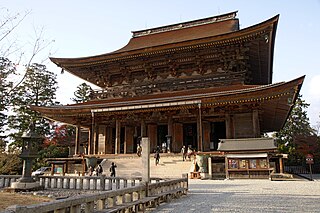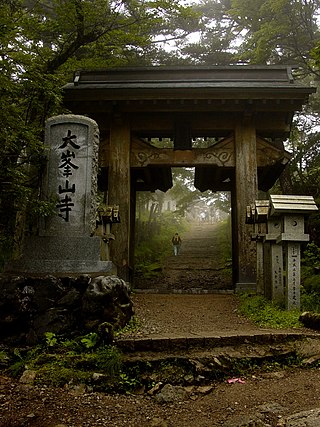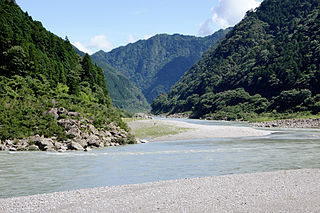Overview
According to tradition, the Ōmine Okugakemichi was established as a training ground for Shugendō, a syncretic religion incorporating aspects of Taoism, Shinto, esoteric Buddhism and traditional Japanese shamanism, [1] by the Asuka period mystic En no Gyōja. It connects Kimpusen-ji in Yoshino district, Nara Prefecture with the Kumano Sanzan in southern Wakayama Prefecture. The route is very rugged and isolated, with a number of demanding sections up to narrow paths on steep slopes and steep climbs on cliffs. Mount Ōmine in the route's name is a specific holy mountain, but originally, the term referred to all of the Yoshino Mountains along the route. Believers took either Kumano or Yoshino as a starting point, depending on their religious orientation. The latter direction has dominated since the Edo period. [2]
Along the route are 75 spiritual places called nabiki (靡) in caves, on rocks, at waterfalls, on mountain peaks, etc. are used for prayer or for spiritual exercises. [2] For religious reasons, women have been forbidden to travel most of the route, and Mount Ōmine remains closed to women to this date. The path takes several days to complete, and is mostly wilderness with no settlements, and few possibilities to turn off the path once started.
During the Edo Period, Kishū Domain controlled most of the territory the path traversed, and often viewed Shugendō monks with suspicion. After the Meiji Restoration, Shugendō faced hostility from the Meiji government's separation of Buddhism and Shinto policies, and large portions of the path were lost or reverted to wilderness. In 1936, the area became part of the Yoshino-Kumano National Park, and from the 1980s, amateur historians and hiking groups have worked to restore the trail and to build mountain shelters for hikers and modern Shugendō followers attempting the trail. [2] In 2002, the trail was designated as a National Historic Site, [3] and it was included within the Sacred Sites and Pilgrimage Routes in the Kii Mountain Range UNESCO World Heritage Site since 2004.
This page is based on this
Wikipedia article Text is available under the
CC BY-SA 4.0 license; additional terms may apply.
Images, videos and audio are available under their respective licenses.








